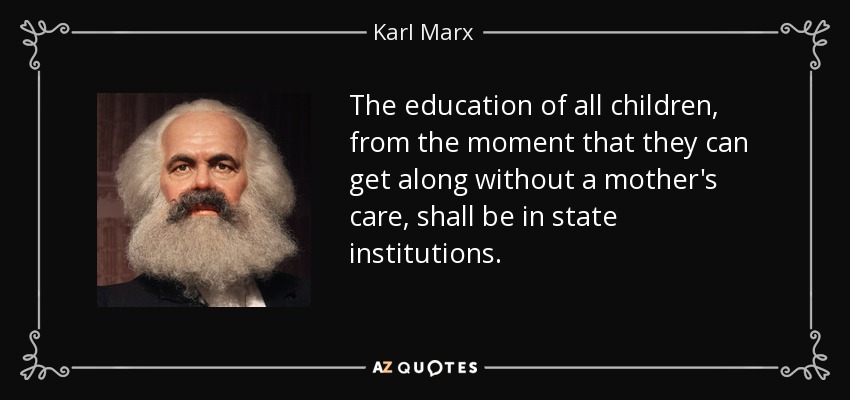Moment.js gives a technique to calculate the distinction between two dates. The distinction is calculated in milliseconds by default, however may even be returned in days, months, years, etc. The unit of time should be specified employing the elective second argument. The following instance and demo illustrate how diff() is used. Moment.js is a stand-alone open-source JavaScript framework wrapper for date objects that eliminates native JavaScript date objects, that are cumbersome to use.
Moment.js makes dates and time straightforward to display, format, parse, validate, and manipulate employing a clear and concise API. Range Key Sample Output zero to forty four seconds s in seconds forty five to 89 seconds m in a minute ninety seconds to forty four minutes mm in 2 minutes ... In forty four minutes forty five to 89 minutes h in an hour ninety minutes to 21 hours hh in 2 hours ... In 21 hours 22 to 35 hours d in a day 36 hours to 25 days dd in 2 days ...
In 25 days 26 to forty five days M in a month forty five to 319 days MM in 2 months ... In 10 months 320 to 547 days (1.5 years) y in a yr 548 days+ yy in 2 years ... In 20 years From edition 2.10.3, if the goal second object is invalid the result's the localized Invalid date string. Moment's string parsing capabilities like second and moment.utc settle for offset data if provided, however convert the ensuing Moment object to neighborhood or UTC time.
In contrast, moment.parseZone() parses the string however retains the ensuing Moment object in a fixed-offset timezone with the presented offset within the string. Add() and subtract() permits an software to add and subtract a selected unit of time. To start off with second time zone, npm deploy moment-timezone. Moment.tz constructor is used to taking all of the arguments as second constructors and take tz argument as time zone identifier. You can create a second object specifying solely the various units, and the remaining will probably be defaulted to the present day, month or year, or zero for hours, minutes, seconds and milliseconds. The string argument that we handed into .format(), which is 'YYYY-M-D', is the format that we're asking the Moment.js library to return the date in.
There are quite a lot of choices for manipulating the second object. For example, you can still add or subtract days, months, years, etc. The following instance reveals how seven days, months, or weeks are added to the present date. Every nation appears to have a unique approach of formatting dates, and accounting for various time zones and daylight savings/summer time takes, well, a complete lot of time. That's the place Moment.js shines – it makes parsing, formatting, and displaying dates a breeze. With the capabilities startOf and endOf a second object may be set to the primary or final level of a selected time unit.
Another individual facet of Moment.js is that it permits you to control dates the best means you wish them to be displayed. You can add and subtract dates between years, months, days, time, and seconds utilizing add () and subtract() methods. The following examples present how years, days, and weeks will be added or subtracted to and from the present date. The offset is about on the second object that utcOffset() is known as on.
If you're eager to set the offset globally, strive utilizing moment-timezone. Note that when you set an offset, that is mounted and will not change by itself (i.e there are not any DST rules). If you wish an genuine time zone -- time in a specific location, likeAmerica/Los_Angeles, take into account moment-timezone. The hindrance with JavaScript's Date object isn't the performance it brings; it's simply particularly cumbersome to make use of as a developer. If you wish to do complicated parsing, validation and displaying of dates, you'll find yourself writing lots of code.
Moment.js additionally extends native JavaScript date capabilities with a wide range of features, similar to relative time, calendar time, durations and multi-language support. It lets you assign a worldwide language or set the language for a specific second object. If you desire to help some different language, then assign the important thing values of that specific language to moment.locale. The following abridged example, taken from the Moment.js docs, exhibits how help could very well be added for French.
Moment-timezone is a superb library for dealing with occasions in several timezones. Given a Unix timestamp or a date string, one could convert it to a totally fledged second object in any IANA timezone. Another relevant a half of an software is to point out dates to the user.
Moment.js grants some techniques for changing a second object to a string with the format() function. Like moment#isSame, moment#isBefore, moment#isAfter any of the models of time which are supported for moment#startOf are supported formoment#isBetween. Year, month, week, isoWeek, day, hour, minute, and second.
We can return to the date-parsing name we made earlier and add a second parsing parameter by passing in a string array of varied conceivable date codecs as a fallback. Let's use the date January 1, 2014 as our enter example. Another annoying process that Moment.js has significantly simplified is date validation. In order to carry out validation, in simple terms cross a date string to the second object, together with the specified date format, and name the isValid() method. This will return true if the date is valid, and false otherwise.
An software has entry to all of the moment.js performance by the second object. Calling the moment() operate returns an object that encapsulates the present date and time. The Earth rotates closer to the east, so the Sun rises at distinct occasions in several locations.
This nearby time is usually additional modified by the daylight saving. The instance calculates the distinction between two second objects in days and hours. By default, moment.locale makes use of the English language strings to return a second objects with i18n. Date parsing means changing some date and time facts right into a second object, which helps you to use the Moment.js framework.
Moment already helps parsing iso-8601 strings, however this may be specified explicitly within the format/list of codecs when setting up a moment. I18next accepts a formatting operate with a format signature that returns a string. We'll be making use of Moment.js beneath the hood, so we'll should manage its personal locale loading.
To retain issues organized and straightforward to rationale about, it's in all probability greatest to construct a separate module for date formatting. However, most tasks don't want all this functionality. However, moment-timezone provides a moment.tz() which you want to use to create a brand new second object with a customized timezone.
For example, this is how one can create a second object representing the present time in Longyearbyen, Norway. Another helpful operate is diff() that returns a quantity representing the distinction between two second objects. Another technique to control second objects is by including or subtracting a unit of time. Moment.js can grant many set and get capabilities to vary and retrieve elements of a date. Note that the second object is mutable, setting a worth adjustments the present object.
In selected instances, a neighborhood timezone (such as Atlantic/Reykjavik) could have a zero offset, and can be regarded to be UTC. In such cases, it might be helpful to set moment.defaultFormat and moment.defaultFormatUtc to make use of the identical formatting. Unless you specify a time zone offset, parsing a string will create a date within the current time zone. The Date object internally represents a Unix timestamp with millisecond precision. It affords capabilities that can convert to and from the system's nearby time zone, however it's usually UTC internally.
Unlike a Moment object, it cannot be set to make use of a further time zone; It has no theory of "mode". Moment.js is absolutely an superior library that simplifies date and time-related manipulations and validations. In this article, we targeted on many of the options of Moment.js which assist in parsing, validating, and manipulating dates and occasions within the browser and Node.js applications.
A variety of helpful plugins are additionally attainable for Moment.js. Plugins like ISO Calendar, Jalaali Calendar, and lots of extra may be discovered on the official plugin page. For extra on Moment.js, the reader is directed to the library's documentation. Unfortunately, the reply is "in 7 days" (and not "a few seconds ago"), since the code today.add(7, 'days') mutated the second object, setting it to seven days within the future.
To get going quickly, we've pulled in equally i18next and Moment.js. This sped up our growth significantly, however in addition got here on the price of potential asset bloat. While an added ~80KB might not look unreasonable for our app bundle, this type of factor will add up over time. In the future, we might possibly wish to refactor our lang and date libraries to swap in smaller options to i18next and Moment, or roll our own.
To use named time zones (America/Los_Angeles) or time zone codes with Moment objects, take a look at the Moment Timezone library. Moment.js is ready to manage not solely mounted cut-off dates however in addition lengths of time. A period might be created with the duration() function. As a 3rd choice the constructor might be referred to as with numbers for year, month, day of month, hour, minutes, seconds and milliseconds. The time models are elective and if omitted are set to 0.
In our case, the distinction between the nearby and common time is 2 hours. One hour is for the time zone and one different hour for the daylight saving. One world time helps to stay away from confusion about time zones and daylight saving time. UTC is utilized in aviation, climate forecasts, flight plans, air visitors manage clearances, and maps.
Unlike native time, UTC doesn't change with a change of seasons. Moment() returns a date and format() converts the date string tokens and replaces them with specified format values, that are readable. At its simplest, simply name the fquarter procedure on any second object.
It returns a formatted string with April being the primary quarter. As of 2.18.0, invalid durations are supported, equally to invalid moments. To create an invalid period you can still cross NaN for a worth of a unit. Each of the Locale#calendar keys may even be a callback perform with the scope of the present second and first argument a second that depicts now. Any properties specified will probably be updated, at the similar time others will stay the same.
This perform doesn't influence moments that already exist. Note that calling updateLocale additionally alterations the present international locale, to the locale that's updated; see this GitHub challenge for extra information. Similarly, moment.monthsShort returns abbreviated month names, and moment.weekdays, moment.weekdaysShort, moment.weekdaysMin return lists of weekdays. It is usually helpful to get the listing of months or weekdays in a locale, for instance when populating a dropdown menu. There are additionally wonderful issues to remember when including time that crosses over daylight saving time.
If you're including years, months, weeks, or days, the unique hour will normally match the added hour. Before variation 2.1.0, if a second modified months and the brand new month didn't have sufficient days to maintain the present day of month, it might overflow to the subsequent month. Construction with an array will create a date within the present time zone.
To create a date from an array at UTC, use moment.utc(Number[]). By default, two digit years above sixty eight are assumed to be within the 1900's and years sixty eight or under are assumed to be within the 2000's. This will be modified by changing the moment.parseTwoDigitYear method.
The solely argument of this technique is a string containing the 2 years enter by the user, and will return the yr as an integer. Instead of modifying the native Date.prototype, Moment.js creates a wrapper for the Date object. To get this wrapper object, in simple terms name moment() with considered one of several supported enter types. Another customary argument in opposition to applying Moment in today's purposes is its size. Moment does not work properly with today's "tree shaking" algorithms, so it tends to extend the dimensions of net software bundles.
If one wants internationalization or time zone support, Moment can get really large. Modern net browsers (and Node.js) expose internationalization and time zone help by way of the Intl object, codified as ECMA-402. Libraries like Luxon make the most of this, decreasing or eliminating the necessity to ship your personal knowledge files. As an example, reflect on that Moment objects are mutable. We handle it in our utilization steerage however it surely nonetheless comes as a shock to most new users. Changing Moment to be immutable could be a breaking change for each among the tasks that use it.
Creating a "Moment v3" that was immutable can be an incredible enterprise and would make Moment a special library entirely. Since this has already been completed in different libraries, we sense that it really is extra primary to retain the mutable API. If you need to create a second object making use of existing date and time, simply name moment() with none arguments. Firstly, I made positive that each one features that deal with date manipulations are unit tested. If the insurance wasn't complete, I've added the lacking circumstances earlier than I made any adjustments to the code.




























No comments:
Post a Comment
Note: Only a member of this blog may post a comment.